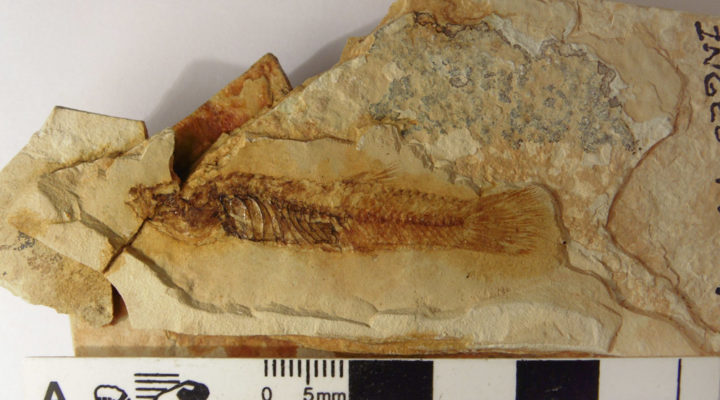EXACT AND NATURAL SCIENCES
In San Juan, scientists discover a new South American fish that lived 7 Myr ago
CONICET researchers in San Juan participated in the find of fossil remains of several specimen of this species.
The Anablepidae, also known as “madrecitas de agua”, are a family of South American fishes whose evolution is not totally understood. So far, the oldest fossil specimens of this group that are known only come from the West of Argentina and are represented by three species very different from the living ones.
The remains were found in Calingasta, province of San Juan, by a team that comprises CONICET researchers from the Museo Argentino de Ciencias Naturales “Bernardino Rivadavia” (MACN, CONICET), the Instituto Geológico del Sur (INGEOSUR, CONICET- UNS), colleagues from the Universidad de Nacional de San Juan (UNSJ) and the Fundación Azara. The fossils turned out to be a new species of anableptide, baptized as Sanjuanableps Calingasta, which lived about 9 and 7 Myr ago during the late Miocene.
“The find constitutes a window to the past where the finest features of thousands of specimens of this species were preserved. This exceptional record allowed scientists to recognize male, female, adult and juvenile individuals”, Federico Agnolín affirms. He is a CONICET associate researcher at the MACN and one of the authors of the study published in Journal of South American Earth Sciences.
The researchers think that these fishes inhabited lakes located in great arid environments of what is now part of Argentina. They probably comprised shoals of individuals of this species because there is no evidence of other species fossilized like that in the place where the remains were found.
“They clearly had sexual diphormism in which the male were remarkably smaller than the female and anal fin made a clear copulatory organ called gonopodio”, Victor Contreras, researcher at the UNSJ, explains.
For Agnolín, this discovery can infer that a big radiation and not well known of Anablepidae existed in the Cuyo region during the Neogene (a geological period belonging to the Cenozoic Area which encompasses an interval from 25 Myr up to two Myr).
This find provides the possibility to obtain more information about the diversification of South American fishes. “The important fossil diversity recorded in Argentina can be useful to understand the genealogical tree. Experts can obtain specific branch points of the evolution of these fishes, what in the future will enable the determination of one absolute time scale for the diversity of this family”, Contreras concludes.
